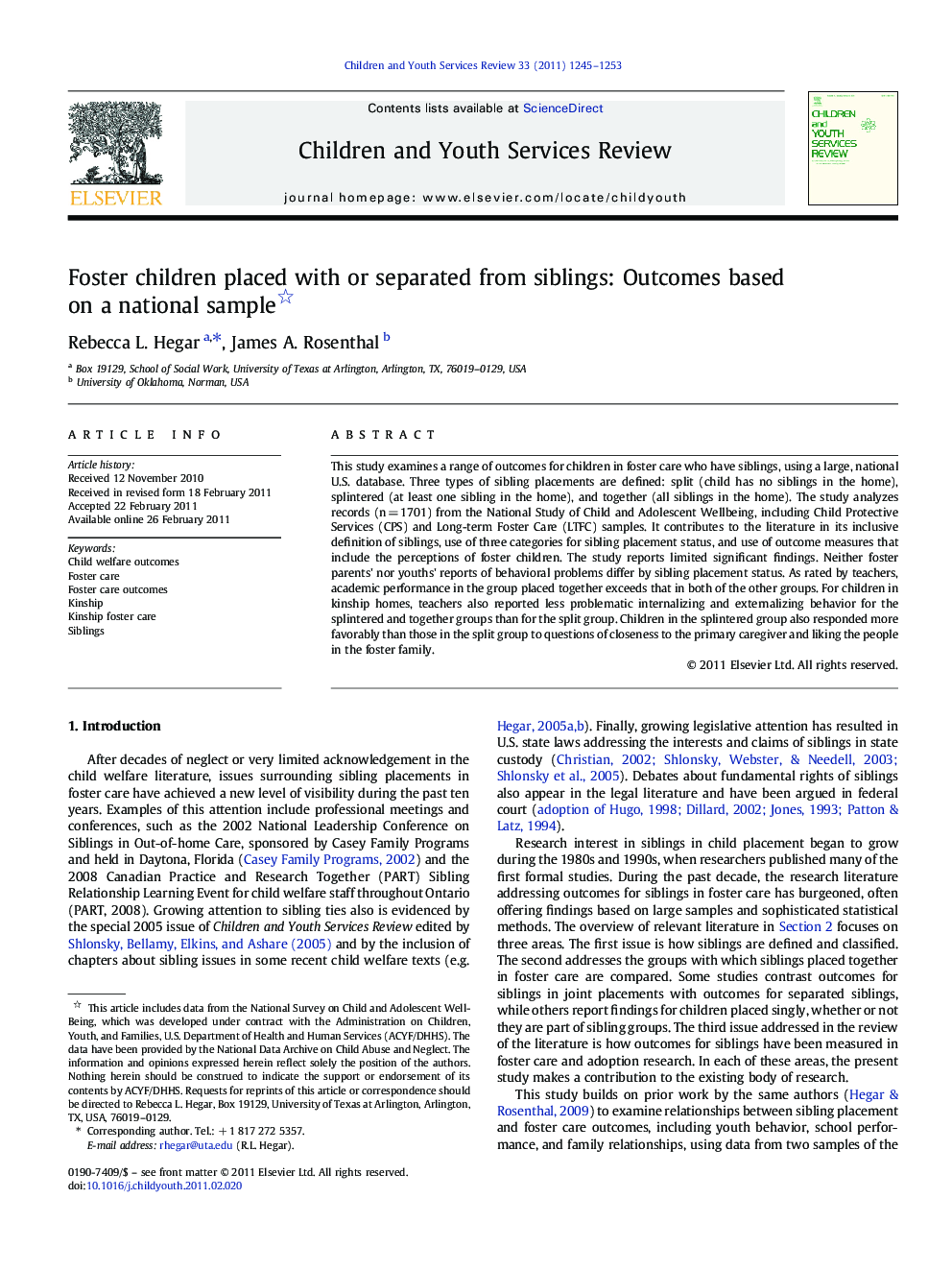| کد مقاله | کد نشریه | سال انتشار | مقاله انگلیسی | نسخه تمام متن |
|---|---|---|---|---|
| 346873 | 617840 | 2011 | 9 صفحه PDF | دانلود رایگان |

This study examines a range of outcomes for children in foster care who have siblings, using a large, national U.S. database. Three types of sibling placements are defined: split (child has no siblings in the home), splintered (at least one sibling in the home), and together (all siblings in the home). The study analyzes records (n = 1701) from the National Study of Child and Adolescent Wellbeing, including Child Protective Services (CPS) and Long-term Foster Care (LTFC) samples. It contributes to the literature in its inclusive definition of siblings, use of three categories for sibling placement status, and use of outcome measures that include the perceptions of foster children. The study reports limited significant findings. Neither foster parents' nor youths' reports of behavioral problems differ by sibling placement status. As rated by teachers, academic performance in the group placed together exceeds that in both of the other groups. For children in kinship homes, teachers also reported less problematic internalizing and externalizing behavior for the splintered and together groups than for the split group. Children in the splintered group also responded more favorably than those in the split group to questions of closeness to the primary caregiver and liking the people in the foster family.
Research highlights
► Reports outcomes for foster children with siblings, using a large U.S. database.
► Sibling placements defined as: split, splintered, or together.
► Reports limited significant findings.
► Better academics when together than splintered (p ≤ .01) or split (p ≤ .05).
► More siblings feel “part of the family” when together than splintered (p ≤ .05).
Journal: Children and Youth Services Review - Volume 33, Issue 7, July 2011, Pages 1245–1253